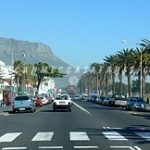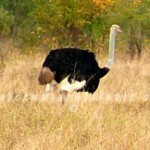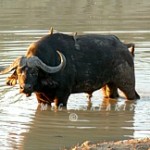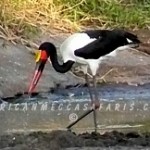Understand Safari Tier Ratings & Experiences In South Africa | Why Visit South Africa For Your Safari Vacation Or Holidays In Africa
GETTING TO & AROUND SOUTH AFRICA
International Arriving Airport: OR Tambo International Airport (formerly Johannesburg International) is the busiest airport on the continent – and the air transport hub of southern Africa. The airport caters for over 13 million passengers each year, and employs some 18 000 people to keep its modern infrastructure and comprehensive services for local and international travelers running smoothly. Tight, effective management makes OR Tambo International one of the most cost-effective airports in the world. It has overtaken Cairo in terms of passenger traffic, and plays host to over 50 airlines.
Cape Town International is South Africa’s second-largest airport, and a prime tourism gateway serving millions of visitors descending on the Mother City every year. Traffic through the airport reflects this: over 60 000 aircraft ferrying over 6.7-million passengers in 2005. By 2015, 14-million passengers are expected to pass through Cape Town International. The airport is world-class and was named Africa’s leading airport in the 2008 World Airport Awards. During the holiday season, local and foreign tourists flock to the golden beaches of Durban and surrounding destinations, as well as to KwaZulu-Natal’s game parks, mountains and rolling green countryside. The gateway to these attractions is Durban International Airport. Durban International is situated 16 kilometers from downtown Durban, and handles over 2.5-million passengers and 17 961 tons of cargo annually. Durban plays host to a number of major international conferences and events, and the airport has a reputation for handling dignitaries and delegates professionally and efficiently
South Africa Domestic Flights: South Africa has a number of airlines flying between its major cities, and to some of its smaller ones, with fares ranging from first-class to cut-price economy. Airports Company South Africa (ACSA) operates South Africa’s 10 principal airports, including the three major international airports at Johannesburg, Cape Town and Durban. The other seven are domestic airports in Bloemfontein, Port Elizabeth, East London, George, Kimberley,
South Africa Road Journey: South Africa’s road infrastructure is excellent, so driving is a viable option, but South Africa is a huge country not easily traversed in a day, so plan your journeys carefully. If you’re not used to driving long distances, rather break the journey, as fatigue is a major contributing factor in motor vehicle accidents. While most national roads are tarred and in good condition, the more rural the road, the more likely it is to be pot-holed and poorly surfaced. Current information on the conditions of roads can be obtained through the Automobile Association of South Africa. The AA also provides invaluable guides for road users in the form of strip maps tailored for specific destinations and information for tourists on accommodation en route. Main roads are identified by colour and number rather than by name, and with a good map which incorporates the route marker system, visitors should have little difficulty in finding their way around.
South Africa Buses: If you’re not used to driving long distances, a bus may be a better idea than a rental car. Check out Intercape, Greyhound, Translux, SA Roadlink and the Baz Bus, all of which offer a variety of national routes. You can book most bus tickets at Computicket.
South Africa Trains: Spoornet is the parastatal railway which covers the routes between the major cities. It’s by no means luxurious or fast, but it’s reasonably comfortable, clean and safe, and offers a relaxed way to see new parts of the country. For real luxury, though, you have to try one of the world’s most luxurious railways, the Blue Train, which runs a number of routes within South Africa, and some further afield. Another great upmarket option is Rovos Rail, which operates beautifully restored, spacious, Edwardian-era carriages, which are drawn by steam locomotives for part of the trip. But for the real railway enthusiast, there is no better choice than the Union Steam Ltd. These beautifully restored carriages are the original Blue Train but in those days, there was only one bathroom per carriage. Although there are small concessions to modern taste, such as gas cooking instead of coal, everything down to the uniforms and cutlery is as it would have been 50 years ago. For short scenic trips, you could try the Banana Express on the KwaZulu-Natal South Coast, the Apple Express out of Port Elizabeth, or the usually steam-driven Outeniqua Choo-Tjoe. The Umgeni Steam Railway, located near Durban, first began operating in 1984. It was originally run by volunteers and that status continues today. The routes start from Kloof and head as far inland as Nottingham Road and Wartburg. Cape Town is probably the only city where you would consider taking the commuter train, and then only really to enjoy the view between Muizenberg and Simonstown as the railway hugs the rocky shoreline. Another excellent option is the Steam Train Company, which “combines the excitement of sight seeing and golf holidays with the irresistible romance of luxury train travel.” Operating out of Cape Town, the Steam Train Company offers golf and scenic tours along the Cape Garden Route, overland tours to Mozambique, Namibia and Zimbabwe, and a series of day tours to the Cape Winelands and along the False Bay Coast.































